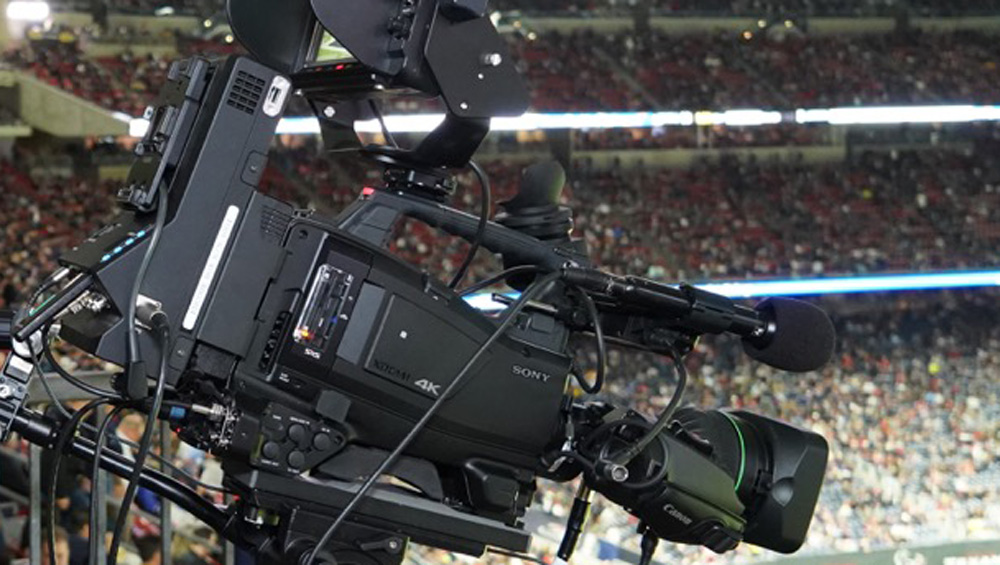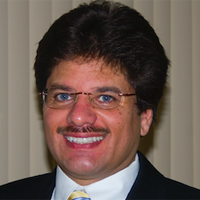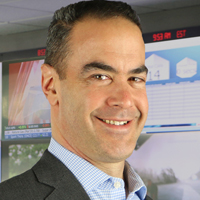
TVN Tech | 2020 Vision: IP, Cloud, 3.0, 5G Come Into Focus

Broadcasters’ transition to IP-based infrastructures should continue to gain momentum in 2020, as stations move to replace aging HD-SDI routers with IP networking cores and virtualize other functions by running them as software applications on common-off-the-shelf (COTS) IT hardware.
Stations and networks are also making greater use of cloud platforms, both public and private, for everything from disaster recovery to full production and playout systems. And next year should see significant progress for two new wireless technologies: the ATSC 3.0 next-generation broadcast standard and the various 5G services being rolled out by wireless carriers.
The IP Transition
The past two years have seen several major new broadcast facilities built with IP networking infrastructures including NBC Universal’s new Telemundo Center in Miami, CNN’s new headquarters at 30 Hudson Yards in New York and BBC Wales’ new facility in Cardiff. 2020 will see several more “greenfield” sites completed with technical infrastructures based on the SMPTE ST 2110 IP networking standard, including a new London base for CNN and a media center in Boston that NBCUniversal is building to support its various broadcast and cable properties there.
Several station groups are considering new IP projects in order to centralize or consolidate operations to serve multiple stations, some after recent acquisitions, say major vendors of IP control software. Reducing their real estate footprint, or moving infrastructure to remote locations with lower rents, is a driver.

Imagine’s Steve Reynolds
“Nearly all of the conversations we’re having with stations are along the lines of, ‘How can I virtualize?’ ” says Imagine Communications President Steve Reynolds. “How can I move equipment and expense out of those in-market operations and move them into something that makes a lot more sense from a size and scale and cost-efficiency perspective?”
The NBCUniversal Owned Television Stations group has already created a data center in Dallas that can support virtualized news production workflows for its smaller Telemundo stations, with KBLR Las Vegas being the first to flip the virtual switch.
Several other broadcasters are also considering the data center approach, particularly since they have already virtualized many of their everyday functions for news production using on-premise COTS hardware. Once a broadcast system is “containerized” through virtualization, it can be moved to any IP environment, including a remote data center or even public cloud.
One of the challenges in early ST 2110 builds has been configuring systems from different vendors to talk to one another over an IP network under the control of enterprise-class orchestration software. CNN engineers say that after equipment installation at 30 Hudson Yards was complete, months of configuration work were still required before being ready to go on-air.
At least a partial solution to that problem is promised by the Advanced Media Workflow Association’s NMOS (Networked Media Open Specifications) protocol for communicating with and controlling remote IP equipment.
NMOS, which allows two devices to automatically discover each other across an IP network, is expected to greatly streamline setting up IP broadcast infrastructures. The key specs are IS-04 — which handles device discovery and registration — and IS-05, which covers connection management. Major vendors like Imagine, Evertz and Grass Valley have been working diligently on supporting NMOS, but to date it’s been a slow road.

Hearst’s Joe Addalia
“The plug-and-play nature of 2110 is the NMOS spec, which is basically that the device says here I am, announces itself on the network and the rest of the network sees it,” says Joe Addalia, director of technology projects for Hearst Television. “That piece is just becoming a reality now, and that’s what makes it easy and manageable …. Even in a television station, you’re dealing with thousands of flows now when you go to IP, as opposed to one wire that has audio, video and metadata in it.”
The successful implementation of NMOS across the industry is “what’s going to get the last piece of apprehension out of the way” in going from SDI to IP, says Chuck Meyer, CTO-Live for Grass Valley. He concedes that as a group, vendors have been somewhat slow in making it happen.

Grass Valley’s Chuck Meyer
“The goal is to press one button to connect,” Meyer says. “We’ve put a lot of work into software development, and I think we’re very close to one-button configuration.”
Chasing The Cloud
While cable programmers like Discovery and the Disney cable networks have been originating their linear program feeds from public and private cloud platforms for several years, broadcast networks and TV stations have been slower to adopt cloud workflows.
Broadcasters may use the public or private cloud to support new digital businesses like OTT, or to handle media processing like transcoding. But most have shied away from using it for mission-critical operations like live production or playout, often due to latency concerns when switching between network feeds and local programming.
But that mindset appears to be changing. Fox Corp. last week announced a sweeping deal with Amazon Web Services (AWS) in which it will employ AWS’s cloud technology to support ingest, production and playout for all of its businesses, including the Fox-owned stations, as it creates a new technology platform in the wake of the Disney/Fox merger.
The AWS system, which will eventually replace technical infrastructure that Fox sold to Disney but still uses under a transitional services agreement, will work with existing Fox production centers in Los Angeles, New York and Charlotte, N.C., as well as a new technical hub Fox is building in Tempe, Ariz.
As part of the deal, Fox will be using two new AWS products designed to address latency problems in using the cloud for live production or high-end post production: an “AWS Local Zone” in Los Angeles that places compute and storage resources close to Hollywood clients to deliver single-digit millisecond latencies; and “AWS Outposts,” compute and storage racks built with AWS-designed hardware that allow customers to run some latency-sensitive applications on-premises, whether that’s in a station or a production truck.
PBS has also been working toward moving its media workflows and network playout into the public cloud for over a year, though it hasn’t yet announced its final plans. And stations are now looking at adopting the cloud for discreet workflows, such as disaster recovery, with an eye toward expanded use of the cloud for future services enabled by the 3.0 rollout.

Diversified’s Jason Kornweiss
Major networks like CNN and NBC have no problem spending the money to build redundant IP routing cores to ensure continuity, says Jason Kornweiss, VP of emerging technology for systems integrator Diversified. But he says many smaller stations moving to IP don’t have those financial resources. Instead, they are buying a single IP router and investing in the private or public cloud as an insurance policy.
“Some may leverage the cloud as a second system, to offload a backup copy with the ability to play out,” Kornweiss says. “That’s what stations are looking at as a backup strategy, either through a data center or a third party, such as an Amazon-hosted infrastructure. NBCU, for example, has full disaster recovery in Dallas for any one of the stations.”
Consumer dollars have already shifted to the cloud, Reynolds notes, which is perhaps a bigger reason for broadcasters to follow. He says that many stations looking to rebuild are adopting a “digital-first” strategy and designing an infrastructure that will serve OTT, mobile and 3.0 just as easily as it will support their over-the-air feed.
Imagine is already doing proof-of-concept trials for non-real-time workflows like disaster recovery or transcoding through the public cloud. Reynolds expects that will soon lead to distribution to OTT channels, like virtual MVPDs, and eventually origination of the main broadcast feed.
“That movement to cloud is just going to keep accelerating,” Reynolds says. “And I think a big part of the reason is that even for these smaller stations and these smaller station groups, their monetization has already moved to cloud. It’s a consumer behavior — so much of the audience is now trying to connect to these guys through some means other than an over-the-air antenna.”
In using the cloud to process and distribute their content, broadcasters will be able to take advantage of artificial intelligence (AI) and machine learning algorithms offered by public cloud providers like AWS, Google Cloud and Microsoft Azure.

Fox’s Paul Cheesbrough
In discussing the AWS agreement at the AWS re:Invent conference in Las Vegas, Fox Corp. CTO Paul Cheesbrough said that Fox content will automatically be indexed in real-time using Amazon’s scene detection and facial recognition algorithms. Fox will also be using the Amazon Kinesis data analytics and Amazon SageMaker machine learning tools.
3.0 Ready To Go
As TV stations retool their production and playout infrastructures for the IP age, many are also preparing to launch a completely new IP-based transmission system in the form of the ATSC 3.0 next-generation broadcast standard. The first “NextGen TV” connected-TV sets capable of receiving 3.0 broadcasts are expected to be shown at next month’s CES 2020 show in Las Vegas, with product hitting store shelves in late spring or early summer.
Two large consortiums of stations, Pearl TV and Spectrum Co., are working to give early adopters something to watch.
At the NAB Show in April, the biggest station groups announced that they would launch 3.0 services in the top 40 markets by the end of 2020. In fact, 61 markets overall are expected to launch 3.0 on at least one “lighthouse” station. Doing so will require the cooperation of multiple stations in a market to “channel-stack” existing 1.0 services in order to clear spectrum for 3.0, as well as the consent of networks and syndicators to have their content aggressively compressed using the latest 1.0 encoders.
While only a handful of 3.0 stations have launched to date, Pearl TV Managing Director Anne Schelle says those top-40 plans are on schedule and that 3.0 proponents have support from “all the networks now” in restacking 1.0 services to make 3.0 happen.

Pearl TV’s Anne Schelle
While the eventual plan for 3.0 is expected to include single-frequency networks (SFNs) that employ multiple transmitters to deliver robust mobile coverage in a market, the initial 3.0 broadcasts will likely include one, and sometimes two, sticks in market. They will deliver 1080p HDR video with Dolby AC-4 audio, content protection and a consumer-facing application that will run on a NextGen TV set.
Schelle won’t disclose which markets will light up first, but says that by the second half of 2020 broadcasters will be able to support consumer electronics manufacturers with a “reasonable penetration of markets.”
She says participating stations have been coordinating their efforts via lengthy conference calls and will make some announcements at CES. The 3.0 launches, which also require coordination with cable operators and other MVPDs in a market regarding changes to the 1.0 signals they carry, will likely occur on a rolling basis throughout 2020.
“From our perspective, we’re getting enough markets on air to support the CE [consumer electronics] launches,” she says.
More Experiments With 5G
Of course, the launch of 3.0 won’t be happening in a wireless vacuum, but instead at the same time as major carriers are slowly expanding the various 5G wireless services they launched in 2019. Whether 5G eventually represents a competitive or complementary service to 3.0 remains to be seen, but it’s safe to say that 2020 will be too early to tell either way.
But one way that broadcasters are already looking to play with 5G is using its high-bandwidth, low-latency wireless pipe for professional contribution applications, such as backhauling signals from wireless cameras in live sports production.
Fox tested 5G backhauls with AT&T during the 2018 U.S. Open golf tournament, and earlier this month, NBC Sports, Sony and Verizon teamed up for a similar test during a Houston Texans vs. New England Patriots NFL game.
An NBC Sports camera operator captured game video with a Sony PXW-Z450 shoulder-mounted camcorder and streamed it with Sony Mobile Communications’ prototype transmitter box and Xperia 5G mmWave device over Verizon’s 5G “Ultra Wideband” network to a production room in Houston’s NRG Stadium.
The Vendor Outlook
After a wave of acquisitions and restructurings in recent years in the media technology space, M&A activity is expected to be somewhat slow in 2020 among technology vendors while consolidation continues among their customers.
But there is one very big fish in play in the form of Grass Valley, which parent Belden Inc. in October announced it would be divesting after purchasing it in 2014 for $218 million. Grass Valley was integrated with several other broadcast vendors that Belden acquired for a total of $700 million between 2009 and 2018, including Telecast Fiber Systems, Miranda, Softel and Snell Advanced Media. Unfortunately for Belden, the combined revenue of those acquired companies once topped $600 million but Grass Valley generates $346 million in revenues today.
The most likely buyer for Grass Valley is a private equity firm, says Joe Zaller, founder of research firm Devoncroft Partners, as the price tag will likely be too steep for a strategic acquisition by another media technology vendor. Belden indicated at the time of the divestiture announcement that a deal was imminent, Zaller says, but it hasn’t closed one yet.
While Grass Valley is profitable, its performance never lived up to the initial optimism that Belden expressed over the acquisition. Its linear playout business in hardware servers had taken a significant downturn in recent years.
 The unpredictability of Grass Valley’s revenues, which are mostly due to the cyclical nature of broadcast investments in technology, also made it a tough fit in Belden’s overall portfolio for investors who are used to the steady revenue streams of the company’s other businesses.
The unpredictability of Grass Valley’s revenues, which are mostly due to the cyclical nature of broadcast investments in technology, also made it a tough fit in Belden’s overall portfolio for investors who are used to the steady revenue streams of the company’s other businesses.
“Within broadcast, it was always very lumpy, and you could sense their frustration in that they couldn’t get their head around how to predict demand in a better way,” Zaller says.
What may complicate the sale, he adds, is that Grass Valley, like other media technology vendors, is facing a business model transition as it changes how it sells and bills for technology. It is moving from a hardware model with upfront capital investment by customers to more of an “opex” model with recurring revenues for software-based services. Those revenues may turn out to be more predictable in the long run, but such a move will likely first cause revenue to dip for a period of 18 to 24 months — not the best selling point for a PE firm.
There have been some notable deals in 2019, says Devoncroft Principal Analyst Josh Stinehour, including IP contribution specialist LiveU being acquired by private equity firms Francisco Partners (former Grass Valley owner) and IPG Capital, and Sony taking a 45% stake in Norwegian routing software supplier Nevion.
Looking ahead, Stinehour says that vendors should pay close attention to the Fox-AWS deal. He says that Amazon providing Fox with on-premise hardware in the form of “AWS Outposts,” as well as professional services, is very significant. In fact, he thinks the extent of technology that AWS eventually winds up providing — and not providing — to Fox could define the future playing field for broadcast technology vendors.
“It will be very interesting to see how third-party suppliers fit into that installation, because that’s going to say a lot about what the market’s going to look like in three, five, seven years,” Stinehour says.
While he’s optimistic that there will still be viable business opportunities for third-party vendors, Stinehour notes that some media companies are already filling technology gaps from cloud providers by building their own systems or outsourcing functions to a services company like Encompass.
Stinehour says the final workflow for Fox’s greenfield platform with AWS could be a “referendum” for what the market opportunity is for media tech vendors going forward.
“What is the gap between what AWS is ever going to be willing to provide to the media vertical, versus what a Fox needs to run a broadcast operation?” Stinehour asks. “Whatever that gap is, that’s going to be the market that’s left over for all the suppliers that we know and love.”
































Comments (0)